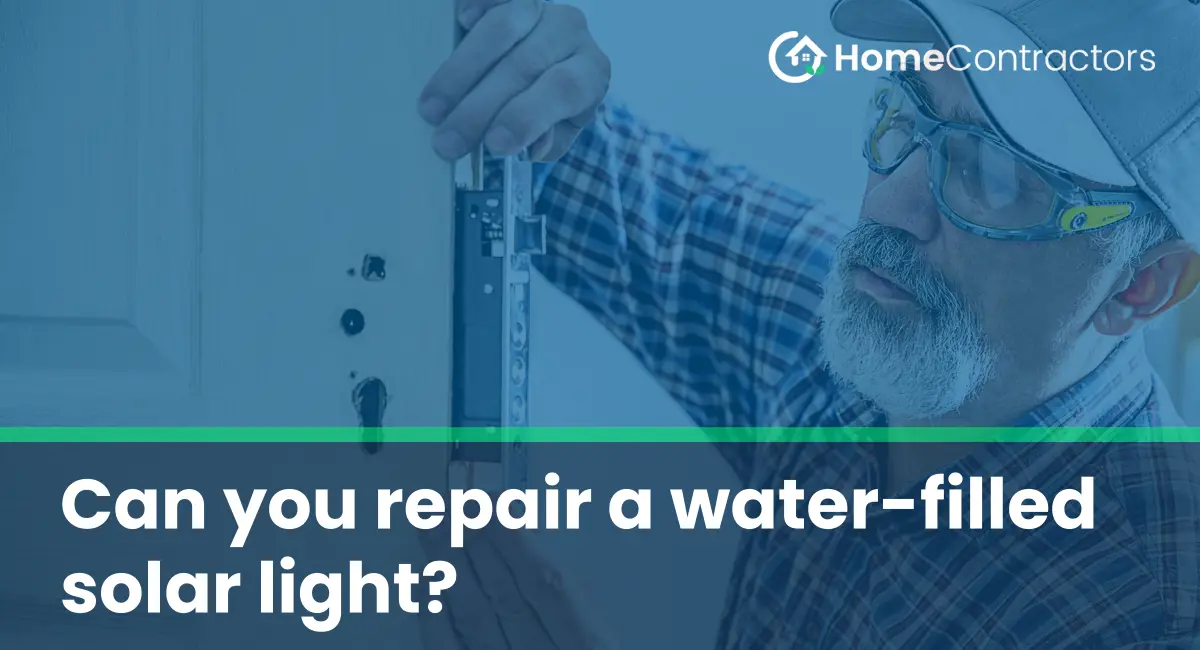Let’s explore this topic in detail.
Understanding the Components of a Solar Light
Before discussing whether a water-filled solar light can be repaired, it’s essential to understand the various components of these lights. A typical solar light consists of a solar panel, battery, light-emitting diode (LED), and a circuit board. The solar panel absorbs sunlight and converts it into electricity to charge the battery. The battery stores the energy and powers the LED, which produces the light. The circuit board acts as the control unit, managing the flow of electricity between the panel, battery, and LED.
Why Water Damage Can Be a Problem
When a solar light becomes water-filled, it can cause several issues. Water can damage the electrical components, leading to short circuits or a complete failure of the light. Additionally, moisture can corrode the metal parts, resulting in rust and degradation. Moreover, if the water contains impurities, such as dirt or minerals, it can further contribute to internal deterioration and hinder the functionality of the light.
Assessing the Damage
The first step in determining whether a water-filled solar light can be repaired is to assess the extent of the damage. Begin by carefully examining the light for noticeable signs of water ingress, such as condensation or pooling. Disassemble the light if possible and inspect each component individually.
If the water damage is minimal and limited to the outer casing, there may be a higher chance of repair. However, if the water has seeped into the battery, circuit board, or LED, the chances of restoring the light’s functionality may be lower. In some cases, it might be more cost-effective to replace the entire solar light rather than attempting repairs.
Steps to Repair a Water-Filled Solar Light
If you believe the water damage is reparable, here are some general steps you can take to attempt a repair:
- Disconnect the solar light: Turn off the light and disconnect it from any power sources or batteries. This is crucial for safety and to prevent further damage.
- Dry the light: Remove any excess water by shaking or gently patting the light. Wipe down the exterior, and if possible, disassemble the light to air-dry its components separately. Place them in a dry and warm location, ideally with good airflow.
- Inspect for damage: Once the light is dry, carefully examine each component for signs of corrosion, rust, or electrical damage. Clean any visible corrosion using a soft cloth or cotton swab and a mild cleaning solution. Be cautious not to use excessive force or solvents that could worsen the damage.
- Test the components: If the components appear undamaged, test them individually to ensure their functionality. Connect the solar panel to a power source and measure the output using a multimeter. Check the battery voltage and examine the LED to verify if it illuminates when powered.
- Replace or repair faulty parts: If any component fails to function properly, it may need to be replaced. Consult the manufacturer’s instructions or seek professional help to find suitable replacement parts. In some cases, minor repairs may be possible with basic soldering skills or by reattaching loose connections on the circuit board.
- Reassemble the light: Once all the components are repaired or replaced, carefully reassemble the solar light, following the manufacturer’s instructions. Double-check all connections and ensure proper alignment of parts.
- Test the repaired light: Place the repaired solar light in direct sunlight to determine if it charges and illuminates correctly. Monitor the light for a few nights to assess its performance and check for any signs of recurring issues or further damage.
When to Seek Professional Help
Repairing a water-filled solar light can be a DIY project for those with electrical knowledge and skills. However, if you are unsure or uncomfortable performing the repair yourself, it is recommended to seek professional assistance. Professional repair services or contacting the manufacturer can provide guidance and expertise tailored to the specific model of your solar light.
Repairing a water-filled solar light depends on the extent of the damage and the skills of the individual attempting the repair. While it may be possible to restore functionality to some lights, others may require replacement. Always exercise caution and prioritize safety when working with electrical components.
